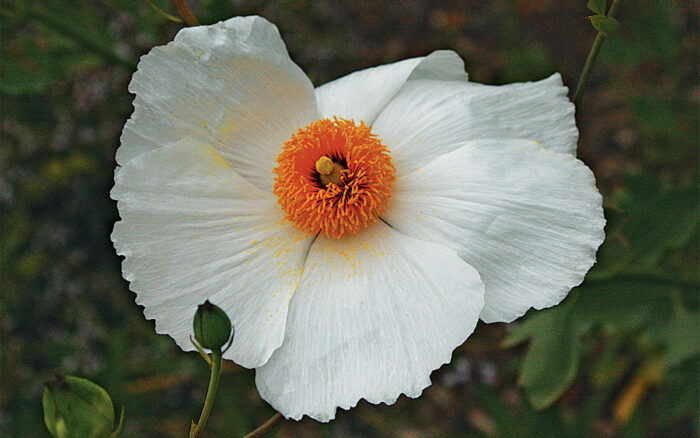
1. Yesterday-Today-And-Tomorrow
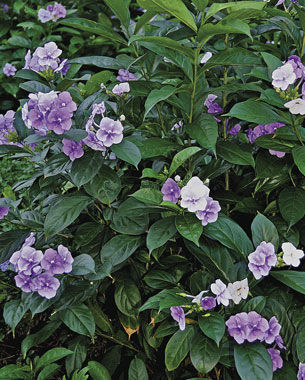
Name: Brunfelsia magnifica
Usda Hardiness Zones: 9 to 11
Size: 6 to 10 feet tall and 3 to 5 feet wide
Conditions: Full to dappled shade; rich, well-drained soil
Yesterday-Today-and-Tomorrow is native to Brazil and came to North America when a plantsman decided to bring a few seeds or cuttings back with him. The first plant I laid eyes on was in the deepest shade at the Huntington Library and Botanical Gardens. And yes, I did ask permission to seek cuttings. It’s a tad untidy in its growth, but please resist the temptation to prune. In spring, every branch will display rich, fragrant purple flowers that fade to a soft purplish white. On and off through the growing season, it will delight you with a few flowers here and there, and sports rich green foliage that yellows a little in the winter months. This plant likes a frost-free position with a drink once a week when established.
2. Desert Willow
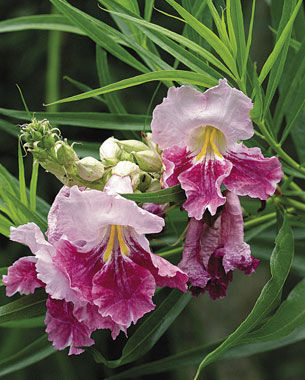
Name: Chilopsis linearis
Zones: 7 to 9
Size: 15 to 30 feet tall and wide
Conditions: Full sun; tolerates a range of soil conditions
Desert willow is a large deciduous shrub to medium-size tree that produces narrow green leaves that give light shade during summer months. Fragrant trumpet-shaped fragrant flowers that vary in color from white to pink to purple appear in May. This plant is popular with beekeepers and is the undisputed favorite among the local bird population. It provides a nesting site as well as a place to stand sentry. Plant desert willow where there’s room for it to grow and where it can be seen by everyone; it will soon become a point of local conversation. Several cultivar selections are available, including Timeless Beauty®, a sterile form producing more flowers than any other.
3. Brakelights® Red Flowering Yucca
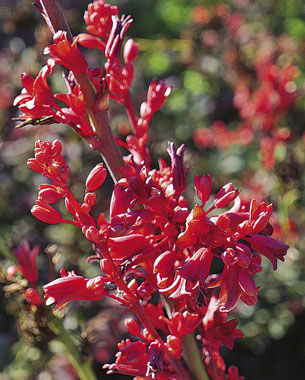
Name: Hesperaloe parviflora ‘Perpa’
Zones: 5 to 10
Size: 2 feet tall and wide
Conditions: Full sun; tolerant of harsh, dry soil
Created by the noted plant explorer and breeder Ron Gass of Arizona, Brakelights®, a smaller and better behaved plant than the rambunctious species, is one of his best. It’s slow growing to form a clump of blue-green leathery leaves and displays traffic-stopping bright red flowers that hummingbirds surround in clouds. Because it sets little or no seed, Brakelights® has the ability to have a longer blooming season on the original flower stem. This plant puts up with it all: direct sun, reflected heat, and, once established, drought. And if you are still thinking you don’t have a spot for Brakelights®, it even excels in containers.
4. Matilija Poppy
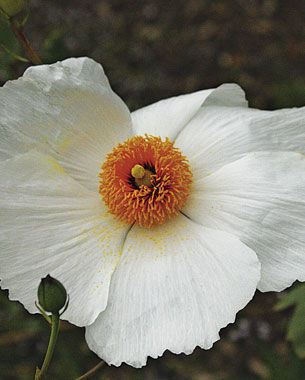
Name: Romneya coulteri
Zones: 7 to 10
Size: 6 to 8 feet tall and up to 10 to 12 feet wide
Conditions: Full sun to light afternoon shade; loose, well-drained soil
A large perennial with an upright habit, Matilija poppy spreads by underground stems and will become large where space permits. I have seen plants 10 to 12 feet across. Beautiful blue-green leaves—I mean really blue—make a breathtaking backdrop for the white flowers, which can be 5 to 10 inches across. A cultivar named ‘White Cloud’ has even bigger blooms. In the center of the spring-blooming flowers nestles a large golden-yellow stamen that in no time becomes a magnet for honeybees. It doesn’t matter if you care for white in the garden. Once you see it bloom, it will be a match made in heaven.
Nicholas Staddon from Orange County, California, is a horticulture consultant, plantsman, and speaker.
Fine Gardening Recommended Products

Corona E-Grip Trowel
Fine Gardening receives a commission for items purchased through links on this site, including Amazon Associates and other affiliate advertising programs.

Corona® Multi-Purpose Metal Mini Garden Shovel
Fine Gardening receives a commission for items purchased through links on this site, including Amazon Associates and other affiliate advertising programs.

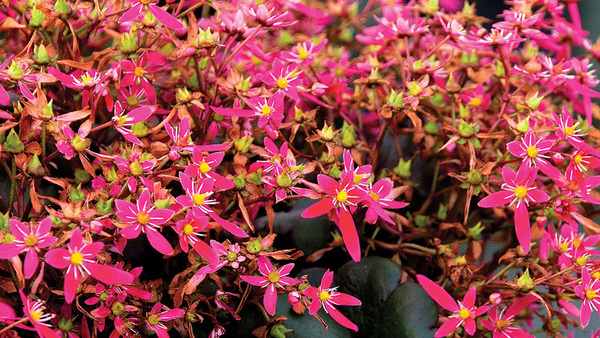

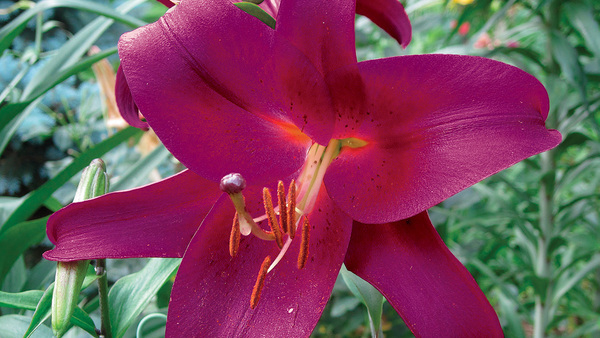














Comments
Log in or create an account to post a comment.
Sign up Log in